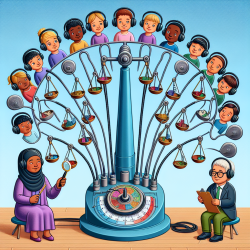Introduction
Central Auditory Processing Disorder (CAPD) is a complex condition that poses diagnostic challenges for audiologists and speech-language pathologists. The lack of a universally accepted test battery for CAPD diagnosis has led to variations in clinical practice, particularly in the use of cutoff criteria. A recent study titled "Impact of Different Cutoff Criteria on Rate of (Central) Auditory Processing Disorders Diagnosis Using the Central Test Battery" sheds light on how these criteria influence diagnosis rates.
Understanding the Study
The study, conducted by Shaikh, Fox-Thomas, and Tucker, examined how different cutoff criteria affect the failure rates of the Central Test Battery (CTB) and subsequent CAPD diagnoses. The CTB is widely used in the United States and includes tests like the Staggered Spondaic Word (SSW) test, Phonemic Synthesis (PS) test, and a speech-in-noise (SN) test. The research analyzed data from 98 children and compared failure rates using two cutoff criteria: 1 standard deviation (SD) and 2 SDs below the mean.
Key Findings
- Using a 1 SD cutoff resulted in a higher failure rate (86.8%) compared to a 2 SD cutoff (66.2%).
- The study found that using a 2 SD cutoff aligns with a normal distribution, reducing false positives in CAPD diagnosis.
- The American Academy of Audiology (AAA) and the American Speech-Language-Hearing Association (ASHA) recommend a 2 SD cutoff for more accurate CAPD diagnosis.
Clinical Implications
The findings suggest that practitioners should consider using a 2 SD cutoff to improve diagnostic accuracy and reduce false positives. This approach aligns with international standards in psychology and behavioral sciences, providing greater statistical confidence in differentiating normal from abnormal performance.
Recommendations for Practitioners
For practitioners using the CTB, it is crucial to be aware of the implications of different cutoff criteria. Implementing a 2 SD cutoff can enhance the reliability of CAPD diagnoses and ensure that children receive appropriate interventions. Additionally, practitioners are encouraged to stay informed about ongoing research and updates to clinical guidelines.
Conclusion
The study highlights the importance of selecting appropriate cutoff criteria in CAPD diagnosis. By adopting a 2 SD cutoff, practitioners can improve diagnostic outcomes and reduce the risk of misidentifying children with CAPD. For further insights, practitioners are encouraged to explore the original research paper.
To read the original research paper, please follow this link: Impact of Different Cutoff Criteria on Rate of (Central) Auditory Processing Disorders Diagnosis Using the Central Test Battery.










